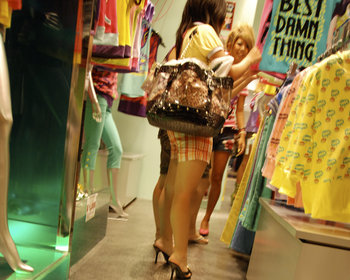
Fashion Retailing
Fashion retailing is driven by seasons and fashion trends. At the start of a season, new items are introduced at full price. Items that appear to be generating little interest may be quickly marked down. As the season progresses, a series of sales events may markdown all inventory in an effort to boost revenue.Regular customers will become accustomed to this cycle. At full price, all sizes are typically available and fans of the brand and price insensitive customers will purchase items. When sales occur, popular sizes and colors may sell quickly resulting in an increasingly odd assortment of items that are further discounted with time.High-low pricing is particularly attractive to fashion retailers as without it they tend to be stuck with inventory that is out of season, out of style or generally unpopular.Pricing Skimming
Price skimming is a similar strategy to high-low pricing whereby innovative new products are released at a high price to quickly recover product development costs. Fans of the product may be willing to pay a premium to have a state of the art version. The price is subsequently reduced to capture sales to customers who aren't as motivated to buy.Ethics & Compliance
In some jurisdictions, laws and regulations prevent retailers from claiming a price is discounted from an "original price" if they never actually sold the item at that price. Setting an unreasonably high price simply to claim a steep discount later is a poor ethical practice that customers and regulators may easily see through.| Overview: High-Low Pricing | ||
Type | Pricing StrategyRetail Strategy | |
Definition | The practice of initially charging a high price for items with subsequent sales events and markdowns that offer a lower price. | |
Value | Avoiding getting stuck with inventory.Obtaining a higher price from price insensitive customers and enthusiasts for your brand. | |
Related Concepts | ||





























